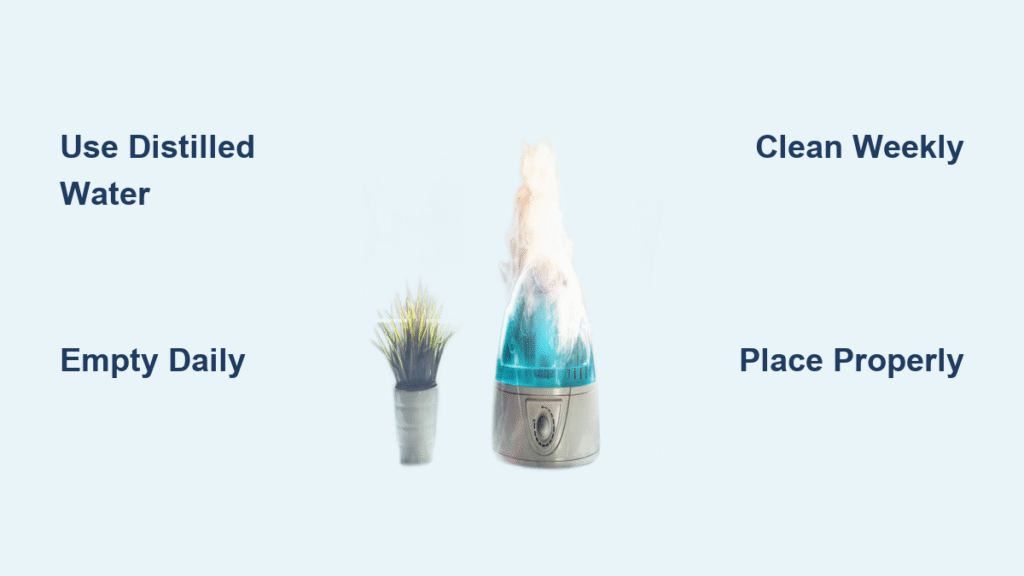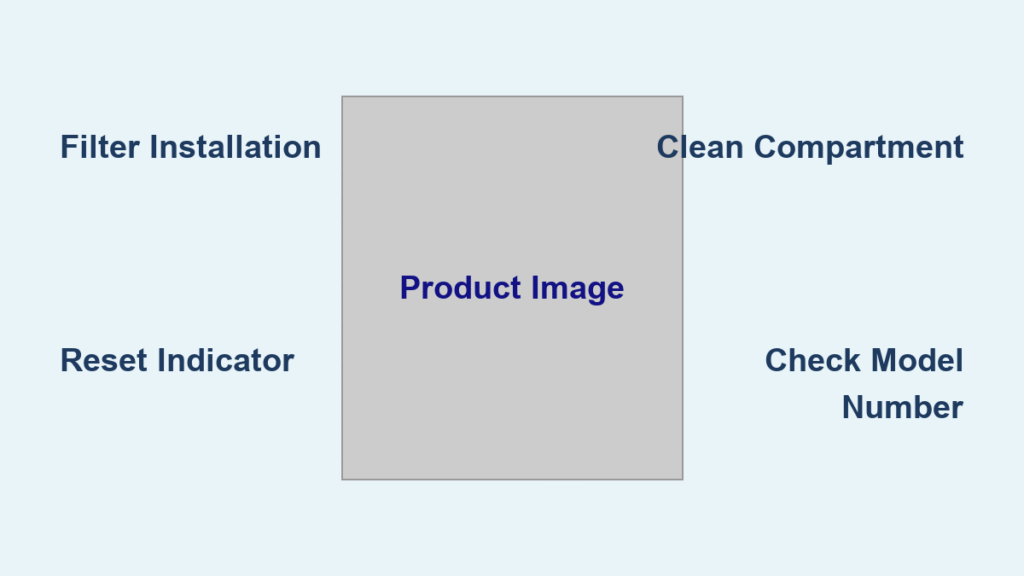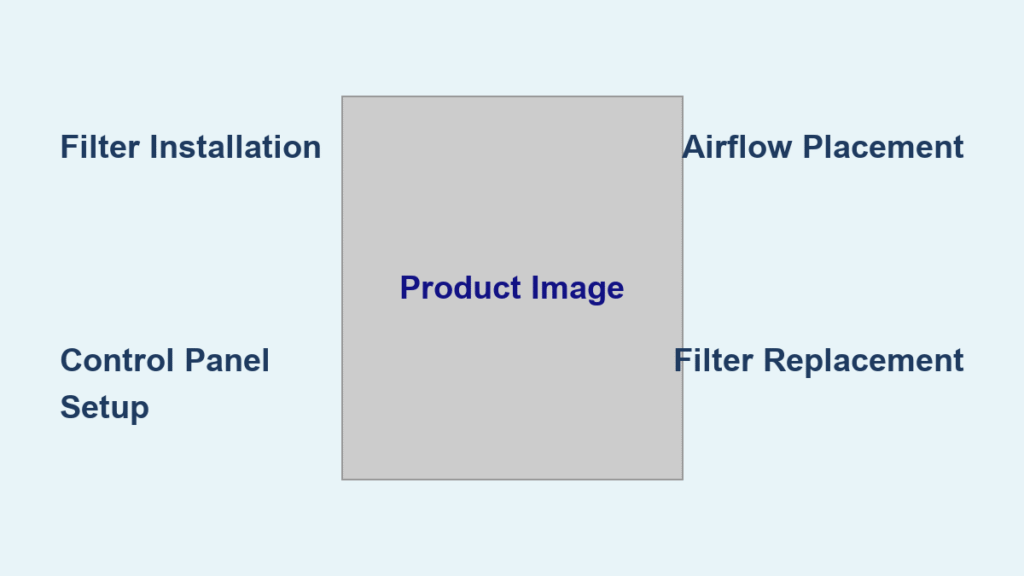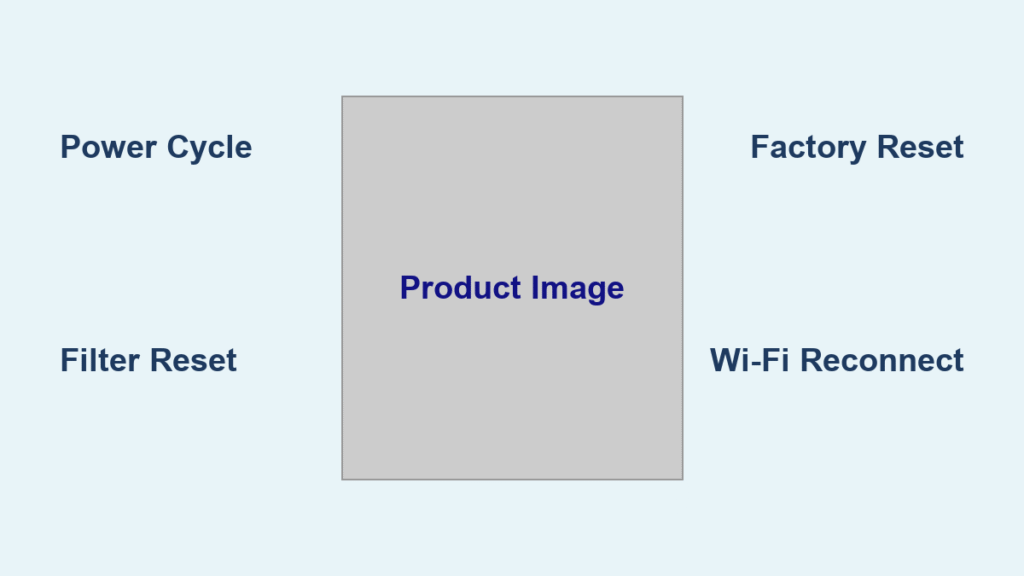That first blast of dry winter air hits like sandpaper—itchy skin, cracked lips, and a throat that feels like you’ve swallowed dust. You bought a humidifier to fix this, but if you’re using the wrong water or skipping critical steps, you’re spraying mold spores and white mineral dust across your bedroom instead of relief. Properly using your humidifier with water transforms it from a potential health hazard into your secret weapon against winter misery. This guide reveals exactly how to fill, maintain, and operate your humidifier with water so you get clean moisture without the risks of bacterial growth or furniture-damaging residue.
Choose the Right Water Type for Your Humidifier

Distilled Water Stops White Dust Dead in Its Tracks
Skip the tap water shortcut—distilled water is non-negotiable for ultrasonic and cool-mist humidifiers. Its near-zero mineral content means no calcium or magnesium gets aerosolized into your breathing space. What you avoid: that annoying white powder coating your nightstand, electronics, and bookshelves, plus invisible mineral particles that can irritate sensitive lungs. Yes, distilled costs $1-$1.30 per gallon, but it slashes your weekly cleaning time by 70% and doubles wick filter lifespan. Pro tip: Buy in bulk at warehouse stores or use a home distiller to cut costs long-term.
When Tap Water Is Acceptable (With Caveats)
Only warm-mist steam humidifiers can safely use tap water because boiling neutralizes microbes and leaves most minerals behind in the heating chamber. But you’ll still battle crusty scale buildup monthly—expect to descale with vinegar after every 30 hours of runtime. For every other humidifier type (ultrasonic, evaporative, impeller), tap water is a mistake. The knowledge base confirms it directly feeds mineral particles into your air, creating “white dust” that settles like fine snow on surfaces within 6 feet of the unit.
Why Softened Water Makes Your Humidifier Dangerous
Water softeners trade hard minerals for sodium or potassium chloride salts—which your humidifier happily vaporizes into the air. This salt residue doesn’t just discolor walls and electronics; it creates a fine, inhalable aerosol that can aggravate respiratory conditions. The EPA explicitly warns against softened water in humidifiers. Stick with distilled or demineralized water even if your home has a softener. If you forget and use softened water once, immediately deep-clean the tank with hydrogen peroxide before reuse.
Initial Setup and First Fill Protocol
Pre-Use Cleaning Prevents Chemical Smells
Never skip the first wash. Manufacturing oils and plastic residues coat new tanks and bases—dumping water straight in turns them into a bacterial breeding ground. Disassemble every removable part (tank, cap, base plate), then scrub with mild dish soap and a soft sponge. Rinse under running water until zero suds appear and the plastic smells neutral. Air-dry all components upside down on a clean towel for 2 hours minimum. Skipping this step causes that “new humidifier” chemical odor that lingers for weeks.
Filter Installation Mistakes That Cripple Performance
For evaporative models, dry wick filters repel water initially—submerge yours in distilled water for 15 minutes before inserting. Ultrasonic units need demineralization cartridges snapped into their designated slots (usually near the water inlet). A common error: forcing filters into place, which cracks housing seals. Instead, align tabs slowly and press until you hear a soft click. Verify water flows freely through the wick or cartridge—any restriction now means poor moisture output later.
Fill Line Precision Avoids Costly Leaks
Peering at the water level in a translucent tank? Fill slowly until the meniscus (curved water surface) touches the MAX line. Overfilling by even 1/4 inch causes immediate leaks as thermal expansion pushes water into the base electronics. Most tanks hold 0.7–1.2 gallons—check your manual’s capacity chart. Pro move: Place a folded towel under the unit during first fill to catch spills. After filling, twist the tank clockwise until it locks with an audible click; a loose seal guarantees puddles under your nightstand by morning.
Strategic Placement for Maximum Effect

Optimal Height and Distance Prevents Wall Damage
Place your humidifier on a non-porous surface (like a plastic tray or sealed wood table) exactly 3–4 feet off the ground—never on carpet or bare wood floors. Maintain 12 inches of clearance from walls to prevent moisture absorption that causes peeling paint or mold growth behind the unit. In bedrooms, position it 6 feet from your pillow to avoid direct mist inhalation (which can trigger coughing fits) while still benefiting from humidity. If you see condensation on nearby walls within 2 hours of operation, relocate immediately.
Airflow Secrets for Whole-Room Coverage
Crack interior doors 2–3 inches to let humidified air circulate naturally—closed doors trap moisture, creating microclimates that exceed 50% humidity. For multi-story homes, run units on open stairwells to let moisture rise. Avoid placing near heat vents or windows; drafts create uneven humidity pockets. If your unit has a mist direction nozzle, angle it upward toward the ceiling 45 degrees—this allows vapor to disperse before settling at breathing level.
Daily Water Management Non-Negotiables
The 24-Hour Empty-and-Rinse Rule
Stagnant water breeds bacteria within 12 hours. Every morning, unplug the unit, remove the tank, and pour out all water—even if it looks clear. Rinse the tank vigorously under running water while scrubbing the bottom corners with your fingers (mineral buildup hides there). Never “top off” old water; this concentrates contaminants. Air-dry the empty tank upside down for 30 minutes before refilling—residual dampness is the #1 cause of musty odors.
Restart Protocol After Idle Periods
Did you forget to empty the tank before a weekend trip? Discard all water if the unit sat unused for >24 hours. Biofilm forms rapidly—visible as a slimy film on tank walls. For idle periods over 48 hours, deep-clean with vinegar before restarting. Pro tip: Set a phone reminder labeled “Humidifier Water Check” for 8 AM daily—it takes 60 seconds and prevents health risks.
Deep Cleaning Schedule That Kills Mold
Weekly Vinegar Soak for Mineral Removal
Every 7 days, disassemble all non-electrical parts and soak them in a 50/50 white vinegar-water solution for 30 minutes. Focus on the ultrasonic disc (a tiny metal plate at the tank base) where mineral crust accumulates—use an old toothbrush to gently scrub it. For warm-mist units, descale the heating chamber with vinegar using a cotton swab in tight spaces. Rinse until the sharp vinegar smell disappears (usually 3 rinses).
Monthly Hydrogen Peroxide Sanitization
Swap vinegar for 3% hydrogen peroxide every 30 days for true sterilization. Soak parts for 20 minutes—this kills mold spores vinegar misses. Critical: Rinse 5–6 times with cold water until no chemical odor lingers. Skipping this step leaves peroxide residue that creates ozone when heated. Replace wick filters immediately if they feel stiff or smell earthy—they’re saturated with bacteria.
Troubleshoot Water Emergencies Fast
White Dust Fix: Double-Lock Your Water Source
If white powder coats surfaces within hours of use, you’ve got mineral-laden mist. First, switch exclusively to distilled water. Second, install a demineralization cartridge (sold separately for most brands). Third, wipe affected furniture with a microfiber cloth dampened with distilled water—never tap water, which adds more minerals. Within 48 hours, the dust storm should stop.
Zero Mist Output? Unclog in 10 Minutes
Mineral blockage is the culprit 90% of the time. Unplug the unit, remove the tank, and inspect the nebulizer (ultrasonic) or wick (evaporative). Soak the part in vinegar for 15 minutes, then use a soft-bristle brush to dislodge debris. For persistent clogs, run the unit empty for 5 minutes on high to vaporize residual moisture—do not skip this step or mold returns.
Monitor Humidity Like a Pro
Hygrometer Placement Mistakes That Skew Readings
Your humidifier’s built-in sensor lies if placed near walls, windows, or electronics. Position a $10 digital hygrometer across the room at breathing height (4–5 feet off ground). Ideal range is 30–50% RH—below 30% causes dryness symptoms, above 50% invites dust mites. If windows fog overnight, your humidity exceeds 60%; reduce runtime by 2-hour increments until condensation stops.
Runtime Adjustments for Weather Swings
Run your humidifier only when humidity dips below 40%. During extreme cold snaps (-10°F or lower), you may need 10–12 hours nightly. In milder winters, 6–8 hours suffices. Set a programmable timer to shut off at 6 AM—waking up to damp sheets means over-humidification. Never run it continuously; 12 hours max per session.
Critical Safety Steps You Can’t Skip
Burn Prevention for Warm-Mist Units
Keep warm-mist humidifiers 3+ feet from children’s beds and never place them where pets might knock them over. Always fill the tank while the unit is cold—adding water to a hot chamber causes violent steam bursts. Test surface temperature with your palm before moving the unit; if it’s too hot to touch for 5 seconds, let it cool 20 minutes first.
Electrical Hazard Checks Before Every Use
Inspect the power cord for fraying weekly—exposed wires near water cause electrocution risks. Always unplug before cleaning, even for quick rinses. Place the unit on a waterproof tray (like a baking sheet) to contain leaks. If you spot standing water under the base after 24 hours, unplug immediately and check for tank cracks.
Budget-Smart Water Practices
Distilled Water Cost Breakdown Per Season
Using 1.5 gallons daily in peak winter (Dec-Feb) costs $120–$160 for distilled water—but prevents $200+ in furniture damage from mineral dust. Buy gallon jugs at Costco ($0.89) instead of便利店 ($1.49) to save $50/season. Pro tip: Freeze leftover distilled water in ice cube trays for emergency refills during shortages.
Filter Replacement Hacks That Save $100 Yearly
Distilled water extends wick filter life from 30 to 90 days. Mark replacement dates on your calendar—never wait for visible mold. For demineralization cartridges, rinse them under distilled water weekly to remove surface minerals; this adds 2–3 weeks per cartridge. Budget $15 monthly for filters versus $50+ for emergency deep cleans caused by neglect.
Mastering how to use humidifier with water transforms it from a chore into your healthiest winter habit. Distilled water, daily rinses, and strategic placement ensure you breathe clean moisture—not mold spores or mineral dust. Tonight, empty your tank, grab distilled water, and run your unit for 8 hours. By morning, you’ll wake up without that scratchy throat—and with the confidence you’re using your humidifier the right way. Start tonight; your lungs will thank you tomorrow.

